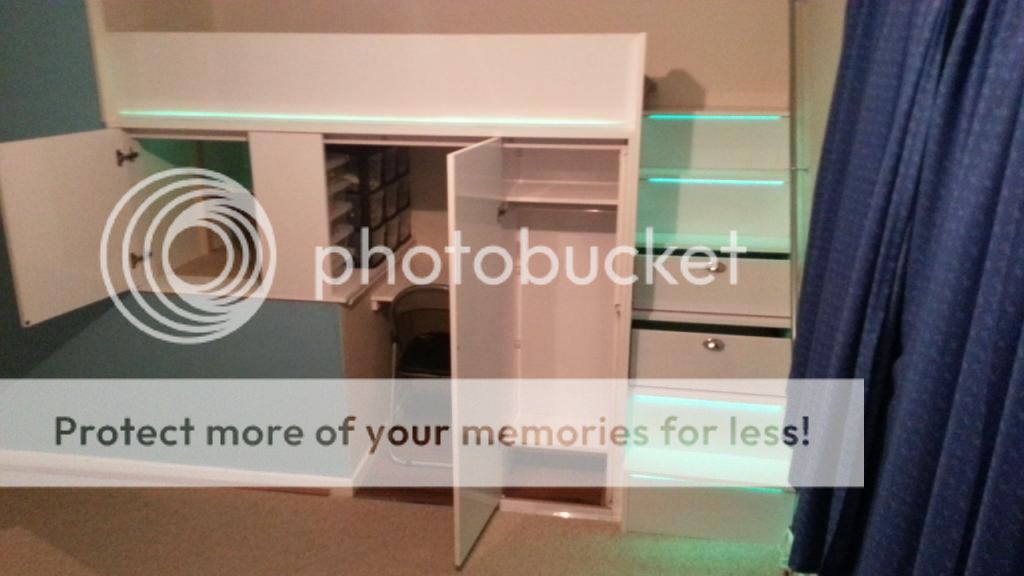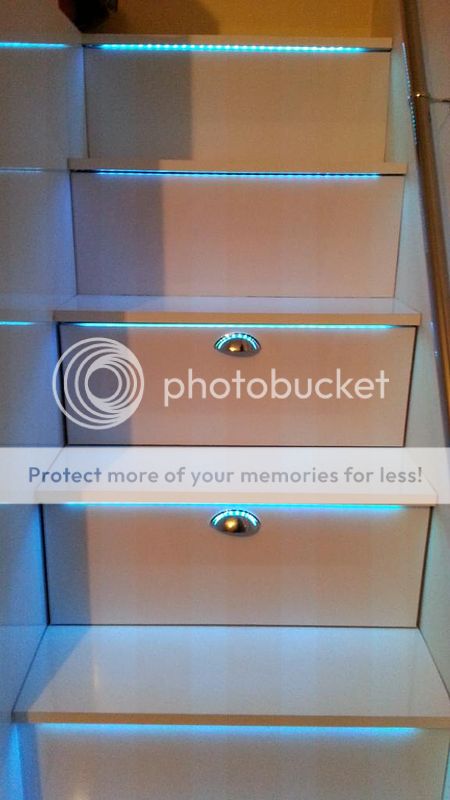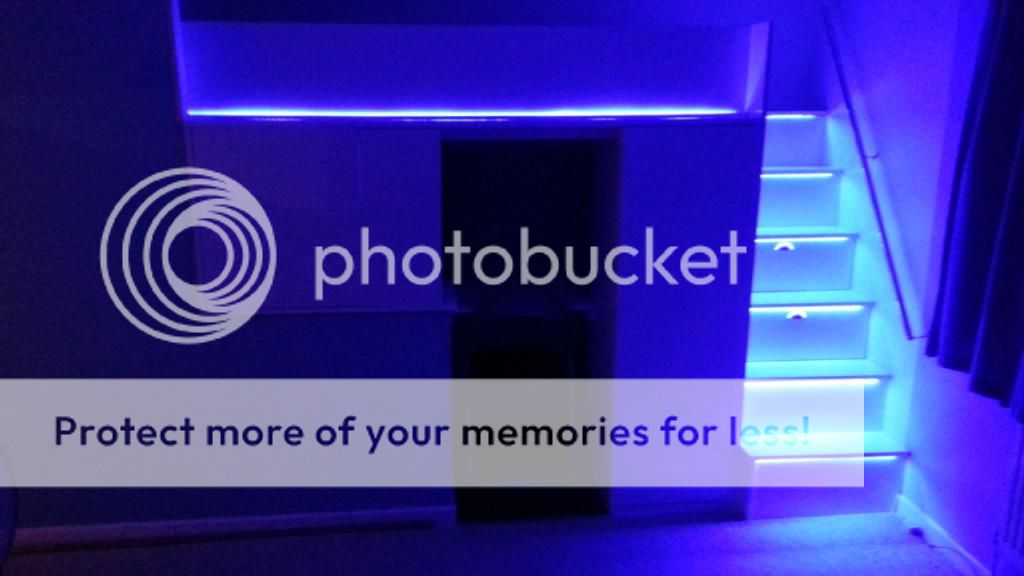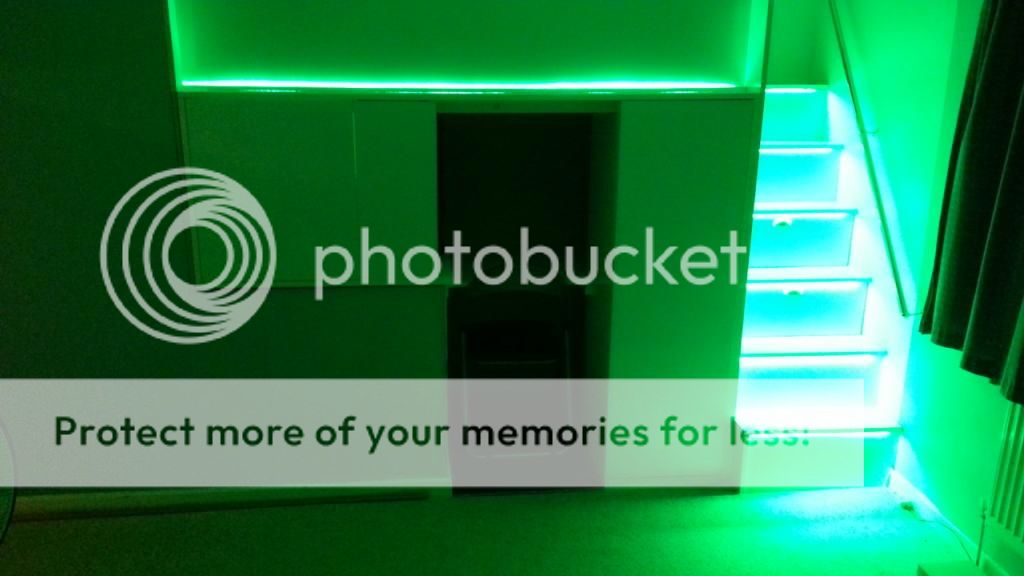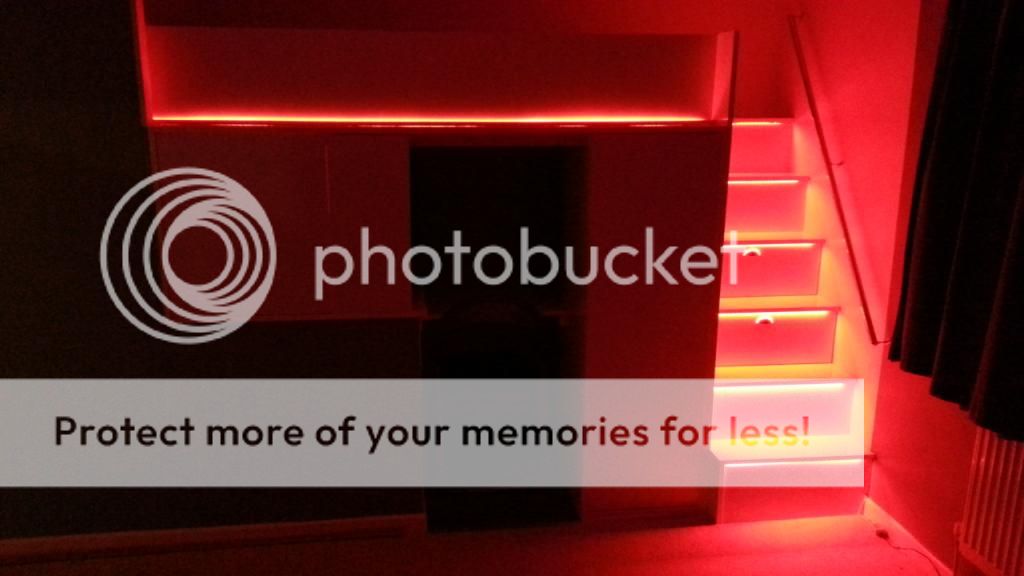Hi,
Here is a small App that I wrote to control APA102 LedStrip.
APA102 are RGB leds that can be individually controlled via a SPI bus.
They are linked in a daisy chain so that a single SPI Master bus can address the whole strip.
A PIC24FJGB106 board takes care of sending the SPI data over the bus.
The Android App is simply reading a picture, converting it into RGB data and send them to the MCU over bluetooth or Wifi
The link between the Bluetooth or Wifi modules and the MCU is UART.
Apk is not yet published on the GooglePlay and too big to be uploaded...
BTW it needs my MCU board to work...
You can :
Here is the result :
As you can see it works quite well, but the speed is not as fast I would have expected...
This is due to the UART protocol which is quite slow (115200 bauds max)
I can achieve much faster throughput via the SPI bus but the limitation is really the UART.
An idea would be to get a Wifi to SPI board and send raw data directly to the LedStrip without MCU board.
I have in mind the very cheap ESP8266 board with custom firmware. But I don't know yet how to change firmware !
Any other idea would be appreciated
[Edit october 2015] Here is a new version running with an ESP8266 (cheap) board.
This board is loaded with ESP8266 Arduino firmware. With it I could easily access to the hardware SPI bus.
The result is a much faster system.
Connecton is fully automatic, no parameter to enter. Simply UDP broadcast and then UDP connection between Android and ESP8266.
Here is a small App that I wrote to control APA102 LedStrip.
APA102 are RGB leds that can be individually controlled via a SPI bus.
They are linked in a daisy chain so that a single SPI Master bus can address the whole strip.
A PIC24FJGB106 board takes care of sending the SPI data over the bus.
The Android App is simply reading a picture, converting it into RGB data and send them to the MCU over bluetooth or Wifi
The link between the Bluetooth or Wifi modules and the MCU is UART.
Apk is not yet published on the GooglePlay and too big to be uploaded...
BTW it needs my MCU board to work...
You can :
- connect over wifi or bluetooth
- choose the image
- change the speed
- change the brightness
Here is the result :
As you can see it works quite well, but the speed is not as fast I would have expected...
This is due to the UART protocol which is quite slow (115200 bauds max)
I can achieve much faster throughput via the SPI bus but the limitation is really the UART.
An idea would be to get a Wifi to SPI board and send raw data directly to the LedStrip without MCU board.
I have in mind the very cheap ESP8266 board with custom firmware. But I don't know yet how to change firmware !
Any other idea would be appreciated
[Edit october 2015] Here is a new version running with an ESP8266 (cheap) board.
This board is loaded with ESP8266 Arduino firmware. With it I could easily access to the hardware SPI bus.
The result is a much faster system.
Connecton is fully automatic, no parameter to enter. Simply UDP broadcast and then UDP connection between Android and ESP8266.
Attachments
Last edited:



